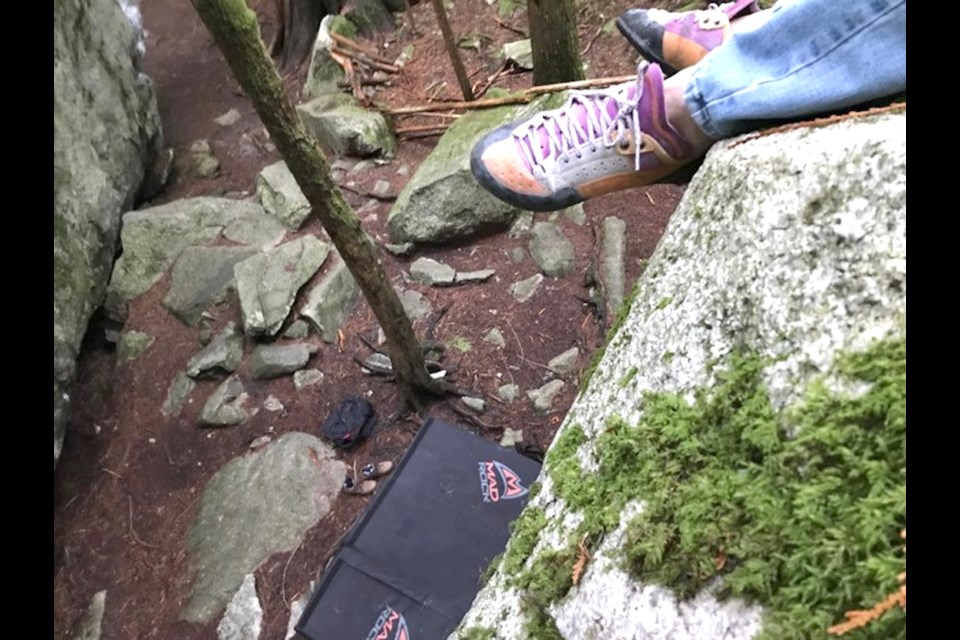About this time last year, extreme heat caused a massive exfoliation of rock, triggering a series of tremendous rock falls that tore through the Stawamus Chief and Slhanay.
The slides, some of which created catastrophic damage, triggered park authorities to shut down some zones, such as the Grand Wall, Zodiac Wall and Slhanay areas, as well as their surrounding boulder fields.
One year later, these closures are still in place. However, the Squamish Access Society is advocating for the opening of some places where risk of further rockfall is minimal.
On June 20, board member Alex Ryan Tucker told The Squamish Chief that the society understands climbers' frustration and has been working with park authorities to develop loosened restrictions as the summer high season begins.
"We definitely share the frustration with the climbing community about closures," said Ryan Tucker. "And we're hoping that they can be amended, just to make them less extensive. Hopefully, that can happen in time for some of those busier weekends."
In the meantime, he said that climbers should stay clear of closed zones.
"I would definitely advise people not to go into the closed areas. We don't want to cause issues for the climbing community. We also don't want to see climbers getting fined."
Ryan Tucker noted that he's been made aware of cases where rangers have issued tickets to people climbing in closed areas.
He said that to the society's understanding, BC Parks wants to do rock scaling and remove dangerous trees that have been severely weakened by the slide.
"We've been told that they are in the process of doing that," said Ryan Tucker. "But we're not actually sure if they've started work or if they're in the process of getting people to do that work. There's things like that where we kind of have to wait for issues to be addressed and resolved before places can reopen."
For instance, the Grand Wall, where the most dramatic rockfalls occurred, still has lingering debris in some of its cracks.
However, the society believes there are some areas that can be opened immediately because there is virtually no risk at this point.
"So a good example of that, perhaps, would be some of the boulders on the ground," said Ryan Tucker. "A specific one would be the Superfly area. That's a pretty significant distance from the actual rockfall debris area and from any of the trees that are damaged. That could be easily opened without putting anyone at risk."
One side of the Cacodemon boulder should be safe as well, he added, and there are other popular areas at the outskirts of the Grand Wall rockfall where it's very unlikely debris would be an issue.
The Slhanay closure is another one that the society is hoping to have lifted, he added. The rockfall there was much smaller and does not seem to have created additional instability.
In the meantime, the society is hoping people will try and explore other areas that haven't been getting the same amount of attention.
Another area of work is the signage, Ryan Tucker said.
"We don't think the closures are very well signposted on the ground," he said. "The maps are posted in the forest, but they're really hard to read. They're also not posted at the boundary of the closure. They're just kind of posted at all of the entrances to the forest. And so it can give people the impression that everything's closed."
The signage can be especially challenging to people for whom English is not their first language.
"The problem is when it looks like the whole forest is closed, and people see climbers in there legitimately climbing in open areas, it can give them the impression that the closures are just theoretical, and they're not really happening," he said. "And we know that people have been fined, for example, for climbing Superfly."
Ministry of Environment responds
In response, a spokesperson for the Ministry of Environment, which is responsible for BC Parks, said three people had been fined as of June 20.
By the government's account, all three cases involved people who refused to leave the area when requested.
Patrols have focused on replacing signage that has been damaged and removed by the public. Rangers have been working on educating the public about the closures, and most people have left when asked, the provincial spokesperson said.
He added that some areas would be opened sooner than others, though authorities said they could not name those areas at this time.
"There are still significant lingering risks in the closure areas. BC Parks continues to work with a geo-tech and other contractors to complete the work necessary for safe reopening," the spokesperson said.



